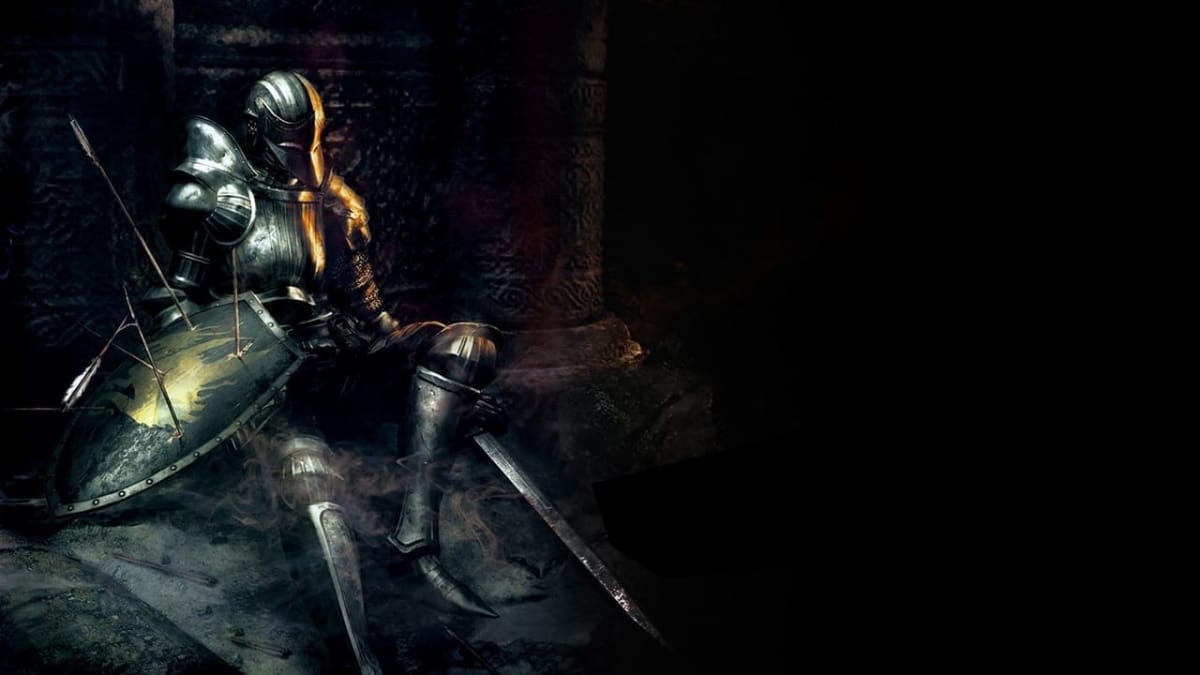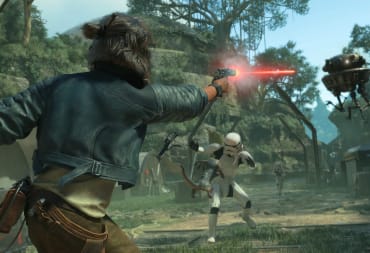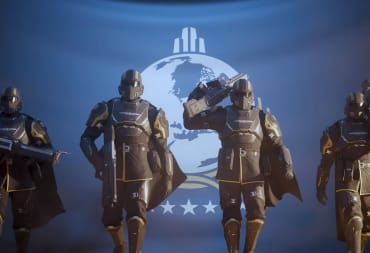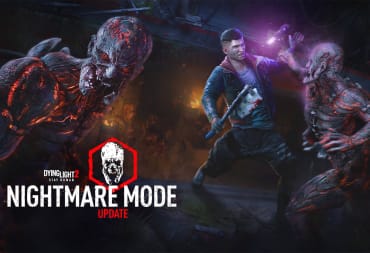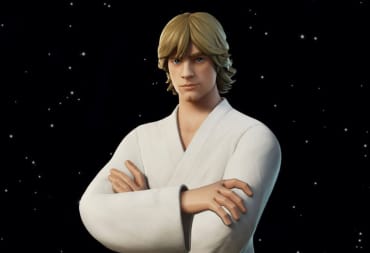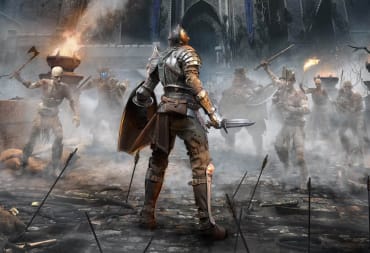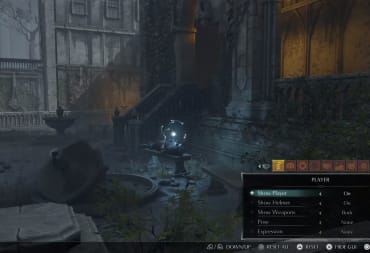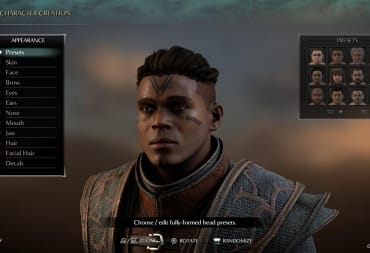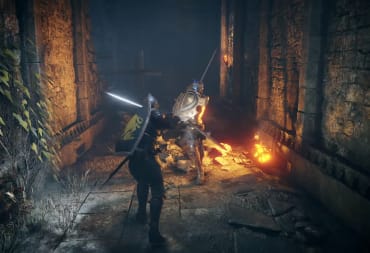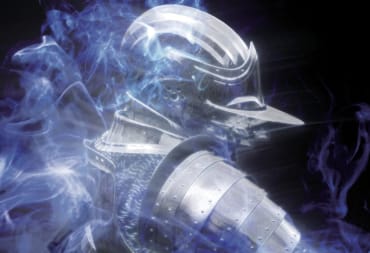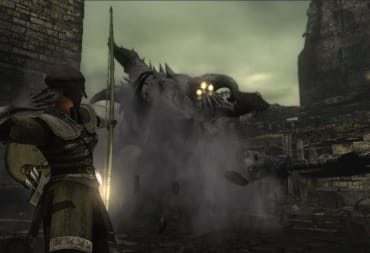For many gamers, the Souls series needs no introduction. Since the release of Dark Souls for Xbox 360 and PS3 in 2011 (a PC release would follow in 2012), the series has garnered an intense cult following largely centered around its punishing difficulty and careful, deliberate design. Communities exist which diligently mine the games for scraps of their obtusely communicated lore. A whole genre has sprung up around many of the Souls' series iconic design choices, while "sister" titles like Bloodborne and the upcoming Sekiro: Shadows Die Twice, both developed by Souls creators FromSoftware, contain at least some of the series' unmistakable DNA. It's safe to say that the Souls series has exerted a powerful influence over the gaming world at large.
There are many who believe this journey began in 2011 with Dark Souls, but the truth is that the series' lineage stretches back further than that. It's possible to trace some of the Souls series' design ethos back to relatively obscure FromSoftware titles like Shadow Tower and (slightly less obscure) King's Field, but the real origin of Dark Souls lies in its immediate predecessor Demon's Souls. Released back in 2009 for the PlayStation 3, Demon's Souls has an interesting publishing history in itself. In Japan, the game was published by Sony, who still hold the intellectual property rights, which is why you're unlikely to see a port of the game on non-Sony consoles any time soon. Sony Asia did publish the game outside of Japan in English-speaking Asian territories like Hong Kong, which meant the game did have an official English translation prior to its release in the West. The subsequent exposure of the game to importers led to Demon's Souls becoming a sleeper hit without an official US or European release. Sony still weren't sure about the performance of the game outside of Japan, but fan demand was growing, and Atlus USA stepped in to acquire US publishing duties. Atlus couldn't publish the game in Europe since they had no publishing wing there, so Namco Bandai - who would go on to become the long-standing publishers of the Dark Souls series - managed to secure EU publishing rights.
Demon's Souls is the originator of a huge amount of what many people now know to be trademark features of Dark Souls. Strange, beautiful and underrated, Demon's Souls is a curious beast, obscured by the fog of time and ambition. That's not to say it didn't sell well. Demon's Souls did fairly respectable numbers, managing to sell over 1.7 million copies by 2015. That said, it's arguably nowhere near as popular or well-known as Dark Souls. It's time to journey through the fog into Boletaria once more and discover the history of Demon's Souls. FromSoftware's game began life as a spiritual successor to the studio's dark fantasy series King's Field. The new game would take some of that series' gameplay and general atmosphere, but wouldn't be set in the same world, allowing the development team to create what Sony Computer Entertainment Japan producer Takeshi Kajii called "something really new". The game's original development team saw Demon's Souls as a predetermined failure due to their perceived inability to create a prototype that they deemed worth playing. Eventually, Armored Core veteran Hidetaka Miyazaki took control of the project and steered it further away from King's Field, creating a separate entity inspired by a patchwork of influences from disparate media including video games, Western tabletop role-playing fantasy gamebooks, assorted folklore, and manga.
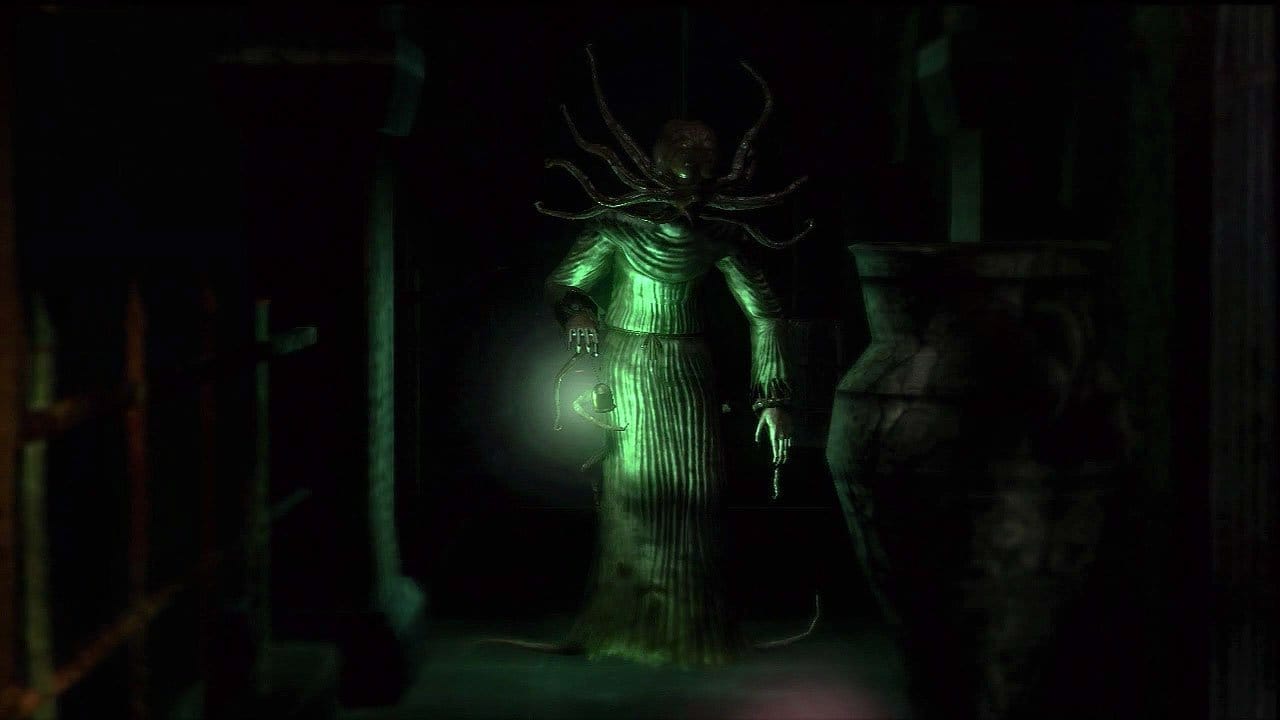
In Demon's Souls, players are tasked with journeying to the fallen kingdom of Boletaria. The kingdom is besieged by a shapeless "Deep Fog", which covers the land's outer areas and repels outsiders. The player-created protagonist is mysteriously exempt from such a fate, and so journeys to Boletaria to seek...whatever the player wishes their motivation to be. One of Demon's Souls' many strengths is its unique approach to storytelling, with players discovering much about the world and its denizens through unconventional sources like item descriptions, small fragments of cryptic dialogue, and the placement and fighting style of many of the game's bosses. Miyazaki has said that this approach comes from not being able to understand English-language fantasy gamebooks, necessitating the creation of his own stories using just the pictures in the books as inspiration. This led to Miyazaki wanting to create experiences where players would not initially know what was happening and would need to piece together key aspects of the story themselves.
This storytelling approach can also be seen in many of the game's environmental narrative flourishes. Stockpile Thomas, essentially the human version of a warehouse, fled his family when Boletaria was covered in the Deep Fog. Exploring the Boletarian Palace will eventually yield two corpses, one of which carries an item called the Jade Hair Ornament while the other carries a female-only armor set. Bringing the Jade Hair Ornament back to Stockpile Thomas will reveal that the ornament belongs to his child, and giving it to him will earn you his gratitude and a ring. There's nothing on the corpses that explicitly ties them to Stockpile Thomas, but their locations suggest that they were killed by the monsters that overran the Palace during the Deep Fog's incursion. Indeed, Stockpile Thomas actually never says that the corpses are those of his family; the implication is clear, but the game allows players to deduce what's happened through environmental details rather than dialogue. There are numerous other examples of this strewn throughout Demon's Souls, but we won't spoil them.
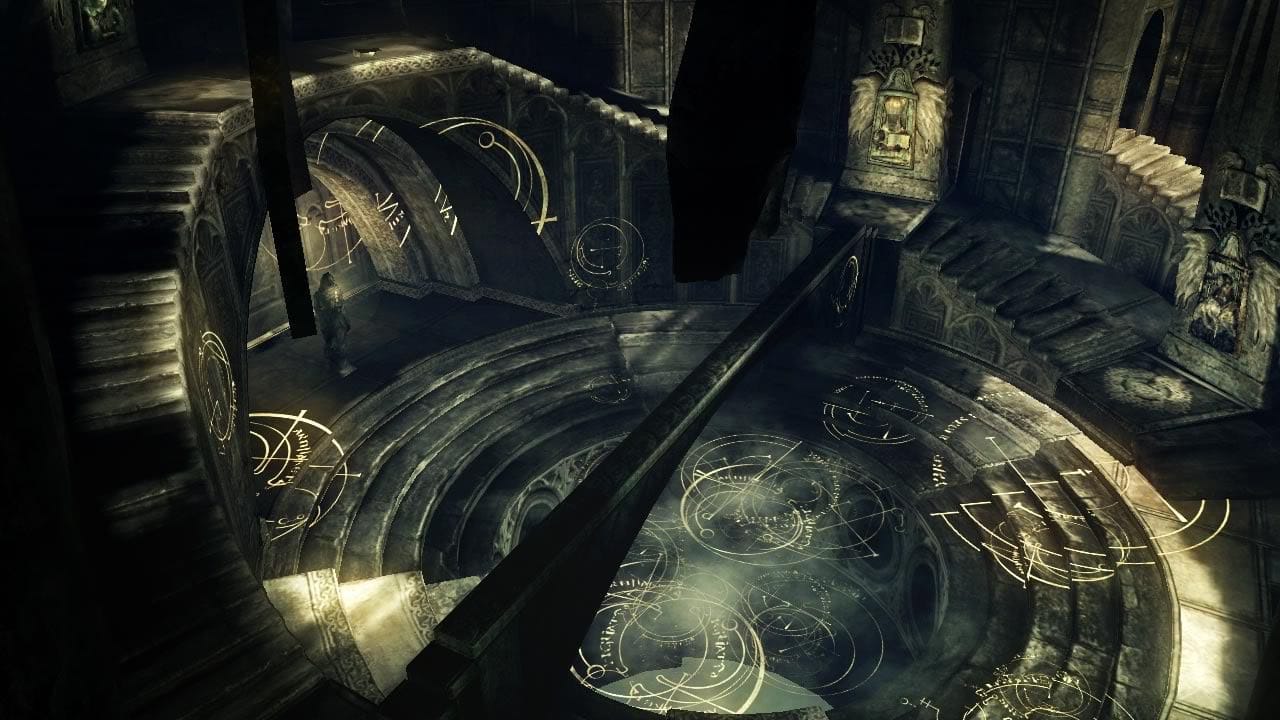
Gameplay-wise, fans of Dark Souls might be a bit thrown by the structure of Demon's Souls. Once the player arrives in the Nexus - the central hub area of Demon's Souls, comparable to Firelink Shrine in Dark Souls or the Hunter's Dream in Bloodborne - they must choose which area they want to tackle from a selection of five. Initially, only the Boletarian Palace area is available, but once the player has defeated the game's first boss encounter they can return to the Nexus and tackle the other four in any order they wish. Each area is split into individual levels and scales in difficulty accordingly, although there is a recommended order in which players should take them on (not that the game is particularly forthcoming about this), and some areas cannot be accessed until the player defeats an "archdemon", usually the final boss of each archstone. Demon's Souls in some ways mirrors the final segment of Dark Souls, in which players must collect four Lord Souls and can theoretically take on the holders of said souls in any order.
One of Demon's Souls' most innovative ideas, and one the series would not only adopt for all future installments but would also influence other games is its approach to death. In the Souls series, souls are simultaneously a form of currency and the method by which stat upgrades and weapon upgrades can be attained. When the player dies, they drop all of the souls they're currently carrying, but if they manage to reach the place where they died and touch their bloodstain then they can retrieve said souls. This balance of risk and reward is perhaps even more harsh in Demon's Souls; if players die, they enter "soul form" and their maximum health drops to half its usual value. Touching your bloodstain will restore you to human form and extend your health bar again. The game thus incentivizes players to go back and look for their souls rather than abandoning them to the whims of fate. There are items players can use to become human again, but they're fairly few and far between, so Demon's Souls wants you to get accustomed to finding your bloodstain. This isn't an idea without precedent; massively multiplayer online RPGs have long featured "corpse runs", which task dead players with returning to the place of their death in order to avoid incurring a resurrection penalty such as equipment degradation or reduced HP. Demon's Souls arguably refined the formula, emphasizing a risk-reward approach that minimized long-term inventory or equipment loss in interesting ways.
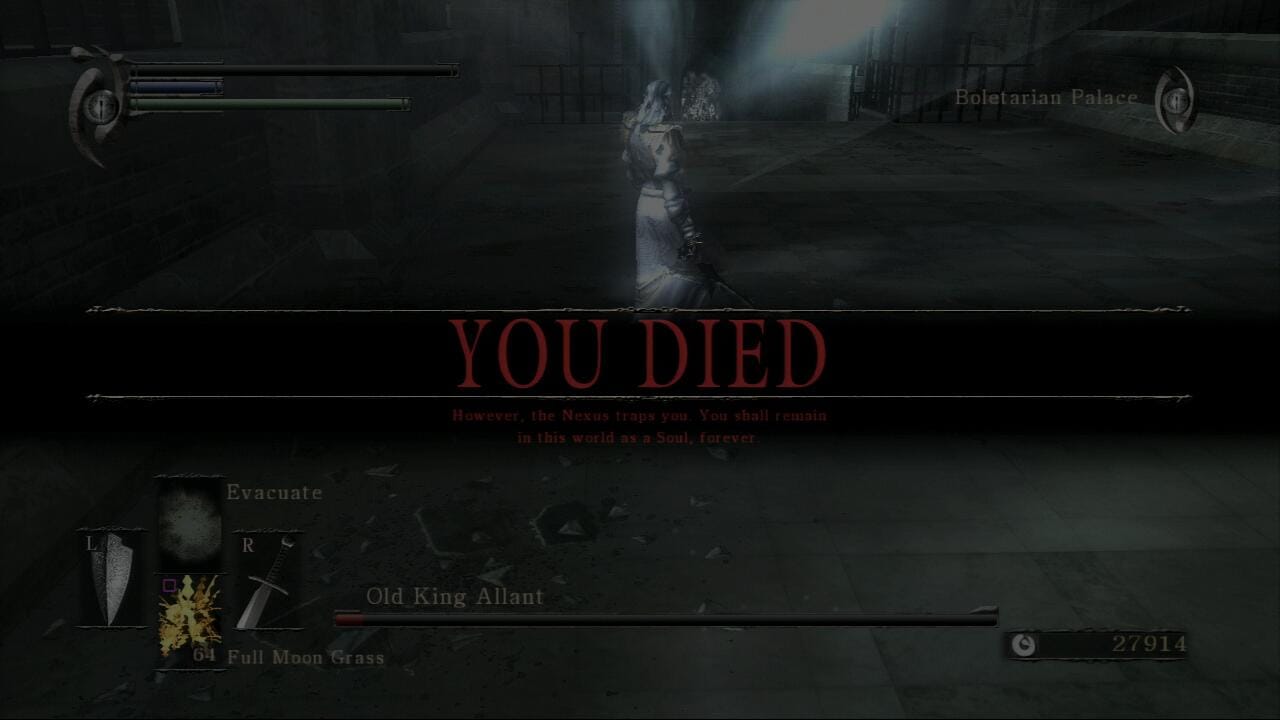
The second unique feature of Demon's Souls is its approach to multiplayer. The game offers either co-operative or competitive play between players, and some bosses seem explicitly designed to take advantage of this feature (the Maneaters spring to mind here). If a summoned co-op player manages to help the host defeat a boss, they'll be restored to human form in their own world, further incentivizing co-operative play. Competition is also encouraged, with the game providing players with stones they can use to aggressively invade other players' games and kill them. If you've played Dark Souls, you might be familiar with the NPC Black Phantoms scattered around the game world, each of which has a name ("Maneater Mildred", "Knight Kirk"). If a player in Dark Souls invades you, you can see their username, and it's unlikely you'll confuse them with an NPC. Demon's Souls features no such distinction, so although players can become accustomed to where Black Phantoms are likely to appear, a first playthrough doesn't make it clear whether it's a player or an enemy you're fighting.
One of the more unique ways in which Demon's Souls approaches multiplayer is its Tendency system. Put simply, there are two kinds of Tendency in Demon's Souls: World Tendency and Character Tendency. World Tendency is affected by every player who's playing on a particular server, while Character Tendency is personal and directly affects the player's character. It might be helpful to think of Tendency as roughly akin to karma and moral alignment systems in other games, although it's not quite that simple. Performing certain actions will tip the World and Character Tendencies towards one or the other extreme. Killing friendly NPCs, invading other players' worlds and performing other negative actions will result in a move towards Black Tendency; White Tendency can be achieved by engaging in co-op with other players and killing certain enemies. It's a unique, intriguing system that offers entirely different content to players depending on the current Tendency of the character and world. Pure Black or Pure White Tendency cause new characters to appear in the game and can even grant entirely new quest lines to interested players. The system might seem a tad hard to understand on first approach, but it's one of the things that makes Demon's Souls stand out even among the Souls series, which hasn't attempted anything like this since.
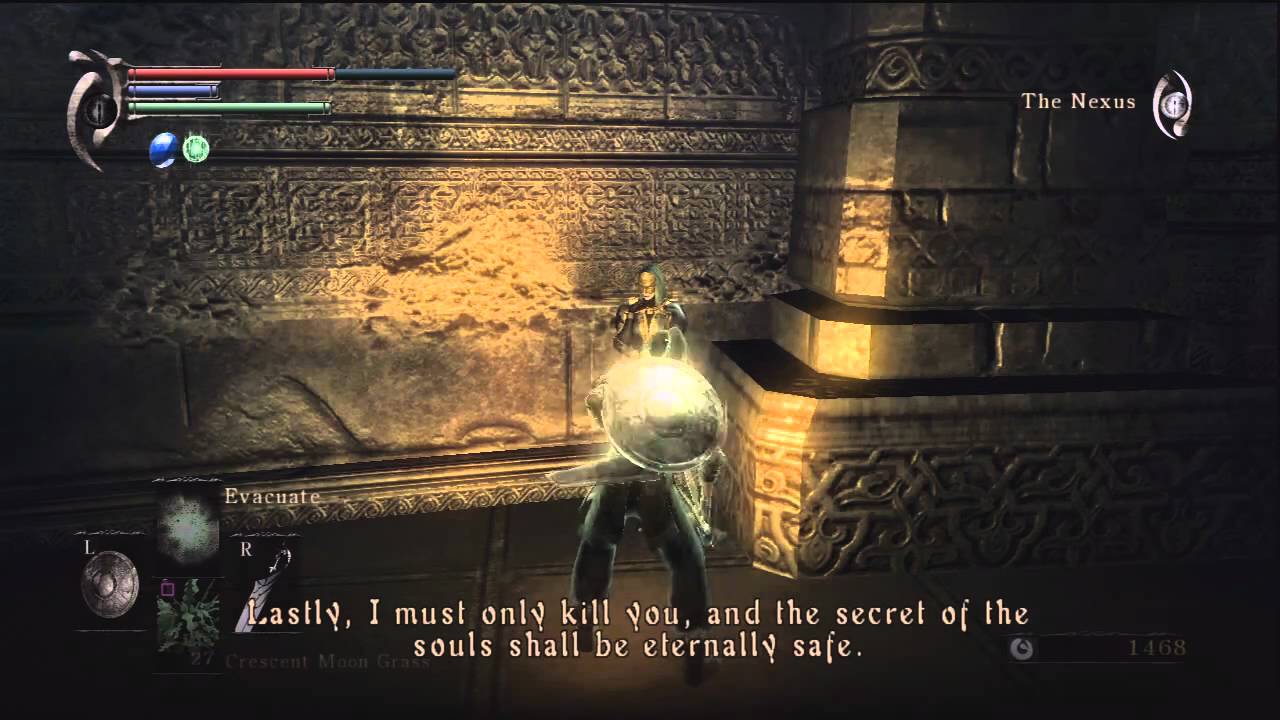
If you're not interested in all this combat malarkey, then Demon's Souls also has a surprisingly sweet and friendly feature (usually) in the form of messages. Players can leave messages throughout each of the game's stages for other players to find, choosing from a set of pre-written screeds that can either warn other adventurers of danger or direct them to treasure. Of course, wily players can also use these messages as misdirection, pointing out places to jump or treasure locations that are in fact trapped or contain difficult enemies. Miyazaki wanted to impart the feeling of an unknown world, one that's difficult to navigate without the help of others, and the ambiguity of other players' involvement in your success or failure contributes to this atmosphere. It is entirely possible to play Demon's Souls offline, which unfortunately anyone who wants to experience the game will now need to do thanks to the February 2018 server shutdown. Dark Souls also features this message system, and a lot of its PvP and PvE content is structured the same as Demon's Souls, but there's no replacing that initial thrill upon beating a particularly difficult Demon's Souls boss with a kindly stranger.
In many ways, it's tempting to see Demon's Souls as a proving ground for Dark Souls, a testing facility for many of that game's slightly more honed ideas. Dark Souls' Estus Flask system is undeniably more elegant and user-friendly than farming for healing grass in Demon's Souls, and the game's quasi-open world is still arguably yet to be bettered in structure by other games (or indeed its own sequels and spinoffs). To think so would be unkind to Demon's Souls, though. There's so much that's unique in Miyazaki's somewhat-forgotten masterpiece. Spoiling the game's many surprises would be unkind, but there are boss encounters in Demon's Souls that subvert your expectations and deny you the satisfying closure of a truly close-fought battle. Each of Boletaria's distinct areas carries its own atmosphere, one of which - the jail area in the Tower of Latria - would go on to directly influence the atmosphere of Bloodborne. Some of Demon's Souls' more esoteric features, such as its baffling World Tendency system or the fact that players can become overburdened with carrying weight, are perhaps best left in the annals of history. Nevertheless, Souls fans, fans of dark fantasy RPGs, and lovers of great underrated video games in general owe it to themselves to revisit this mysterious flawed masterpiece.
Have a tip, or want to point out something we missed? Leave a Comment or e-mail us at tips@techraptor.net
